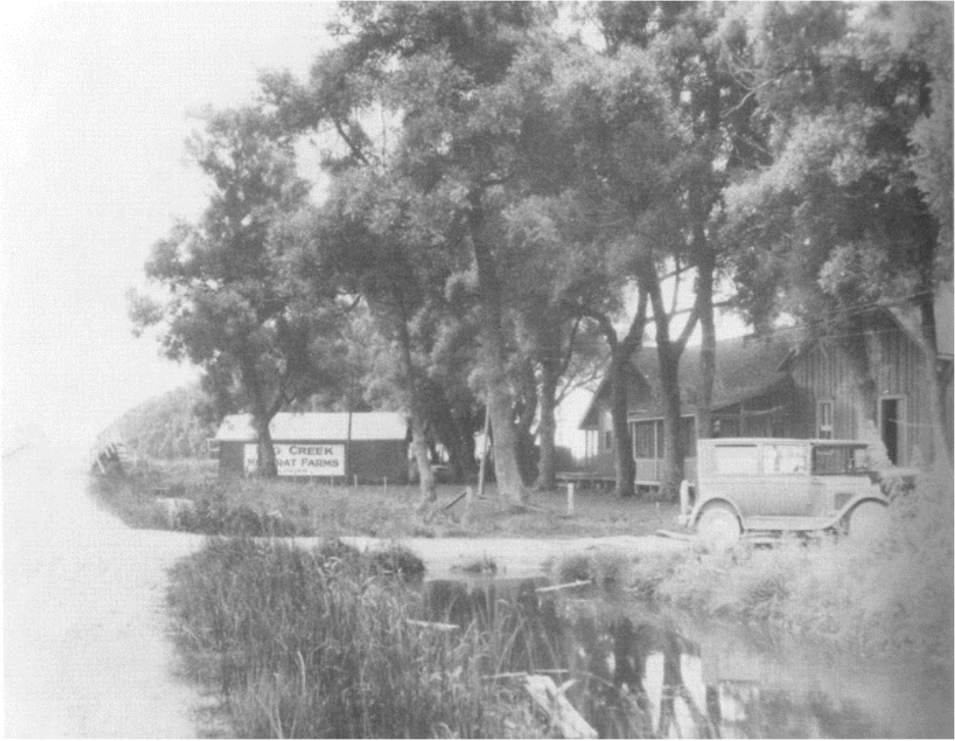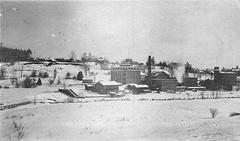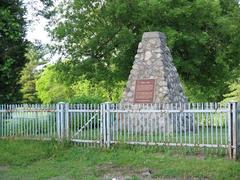
Comprehensive Guide to Visiting Big Creek National Wildlife Area Turkey Point Canada
Date: 31/07/2024
Introduction
Big Creek National Wildlife Area (NWA) is a sanctuary of ecological significance located on the north shore of Lake Erie, about 3 kilometers southwest of Port Rowan, Ontario. Spanning 802 hectares and divided into the Big Creek Unit (639 ha) and the Hahn Marsh Unit (163 ha), this area represents the largest sandspit-marsh complex in the Great Lakes. Its importance extends globally due to its rich biodiversity and critical habitats supporting various at-risk species and migratory birds. (source)
Understanding the ecological significance of Big Creek NWA is essential for promoting conservation efforts and responsible tourism. This guide aims to provide comprehensive visitor information, highlight the area’s biodiversity, and offer tips for eco-friendly tourism to help preserve this invaluable natural resource for future generations.
Table of Contents
- Introduction
- Visitor Information
- Wetland Habitat and Biodiversity
- Avian Diversity and Migration
- Amphibians and Reptiles
- Invertebrates and Flora
- Conservation Efforts
- Seasonal Highlights and Visitor Access
- Educational and Interpretive Programs
- Ecological Research and Monitoring
- Tips for Eco-Friendly Tourism
- Conclusion
- FAQ
Visitor Information
Visiting Hours
The NWA is open to the public from mid-May to mid-September, allowing visitors to engage in bird watching, hiking, and photography on designated trails and dyke tops. The area is closed from mid-September through mid-May to protect sensitive habitats and species during critical periods such as migration and breeding.
Ticket Prices
There are no entrance fees required to visit Big Creek NWA; however, fishing and waterfowl hunting are permitted but are subject to provincial and federal regulations.
Wetland Habitat and Biodiversity
Big Creek NWA’s wetlands are part of the largest sandspit-marsh complex in the Great Lakes, making them a vital habitat for a diverse range of species.
Avian Diversity and Migration
The wetlands of Big Creek NWA are internationally recognized for their importance to bird conservation. Over 200 bird species utilize this area during their spring and fall migrations, making it a significant staging area for waterfowl. Notable species include the Mallard, American Black Duck, American Wigeon, Green-winged Teal, Ring-necked Duck, Wood Duck, Canada Goose, and Tundra Swan. The area is also a crucial breeding ground for marsh birds such as the Least Bittern and the Prothonotary Warbler, both of which are federally listed species at risk.
Amphibians and Reptiles
Big Creek NWA provides essential habitats for various amphibians and reptiles. The wetlands support a range of species, including frogs, turtles, and other amphibians, which rely on the undisturbed marshes for breeding and feeding. The area’s ecological integrity is vital for the survival of these species, many of which are sensitive to environmental changes and habitat destruction.
Invertebrates and Flora
The wetlands are also home to a rich diversity of invertebrates and plant species. The presence of invertebrates such as insects plays a crucial role in the food web, supporting higher trophic levels, including birds and amphibians. The flora of Big Creek NWA includes various wetland plants, such as the Swamp Rose Mallow, which is another federally listed species at risk.
Conservation Efforts
Big Creek NWA is part of the Long Point Peninsula and Marshes Important Bird Area and the Long Point World Biosphere Reserve buffer zone. These designations highlight the area’s global ecological significance and the need for ongoing conservation efforts. The Ramsar Convention recognizes Big Creek NWA as a wetland of international importance, emphasizing its role in maintaining biodiversity and supporting migratory species. (source)
Seasonal Highlights and Visitor Access
The NWA is open to the public from mid-May to mid-September, allowing visitors to engage in bird watching, hiking, and photography on designated trails and dyke tops. Fishing and waterfowl hunting are permitted but are subject to provincial and federal regulations. The area is closed from mid-September through mid-May to protect sensitive habitats and species during critical periods such as migration and breeding.
Educational and Interpretive Programs
Big Creek NWA offers educational and interpretive programs to promote conservation awareness. LEES+Associates developed an innovative landscape strategy that includes eight educational nodes along a 4.5 km trail, providing information on wildlife and habitat protection. These programs aim to connect visitors with nature and foster a deeper understanding of the ecological significance of the area.
Ecological Research and Monitoring
Environment Canada establishes National Wildlife Areas (NWAs) like Big Creek for conservation, research, and interpretation purposes. These areas are protected under the Canada Wildlife Act and serve as refuges for migratory birds, species at risk, and other wildlife. Ongoing research and monitoring efforts are crucial for understanding the ecological dynamics of the wetlands and informing conservation strategies. (source)
Tips for Eco-Friendly Tourism
Visitors to Big Creek NWA are encouraged to practice eco-friendly tourism to minimize their impact on the environment. Some tips include:
- Stay on Designated Trails: To protect sensitive habitats and species, always stay on marked trails and avoid disturbing wildlife.
- Carry Out Trash: Ensure that all waste is carried out and disposed of properly to maintain the cleanliness and ecological integrity of the area.
- Use Binoculars: Use binoculars for bird watching to avoid getting too close to wildlife and causing unnecessary stress.
- Respect Seasonal Closures: Adhere to seasonal access restrictions to protect breeding and migratory species during critical periods.
- Educate Yourself: Take advantage of educational programs and interpretive signs to learn more about the ecological significance of Big Creek NWA and the importance of conservation efforts.
By following these guidelines, visitors can enjoy the natural beauty of Big Creek NWA while contributing to the preservation of its unique and vital ecosystems.
Conclusion
Big Creek National Wildlife Area stands as a beacon of conservation and biodiversity, playing a critical role in maintaining ecological balance in the Great Lakes region. Its international recognition and designation as a Ramsar site underscore its significance in global biodiversity preservation. Visitors can enjoy a wealth of natural experiences, from observing over 200 bird species during migration to exploring the rich flora and fauna that thrive in its wetlands. (source)
By adhering to guidelines and participating in educational programs, visitors contribute to the ongoing conservation efforts that protect this precious habitat. The area’s seasonal closures and regulated activities, such as fishing and hunting, ensure minimal disruption to the wildlife. As stewards of nature, it is our responsibility to respect and preserve the delicate ecosystems of Big Creek NWA, ensuring that its beauty and biodiversity continue to flourish for generations to come. (source)
In conclusion, Big Creek NWA offers a unique and enriching experience for nature enthusiasts and casual visitors alike. Embracing eco-friendly practices and supporting conservation initiatives will help safeguard this ecological treasure, allowing future visitors to enjoy its natural splendor.
FAQ
What are the visiting hours of Big Creek NWA?
The NWA is open to the public from mid-May to mid-September.
Are there guided tours available?
While there are no regular guided tours, educational programs and interpretive nodes provide valuable information.
What are the ticket prices?
There are no entrance fees required to visit Big Creek NWA.
Is fishing allowed?
Yes, fishing is permitted but subject to provincial and federal regulations.
How can I minimize my impact when visiting?
Stay on designated trails, carry out all trash, use binoculars for bird watching, respect seasonal closures, and educate yourself through available programs and signs.


